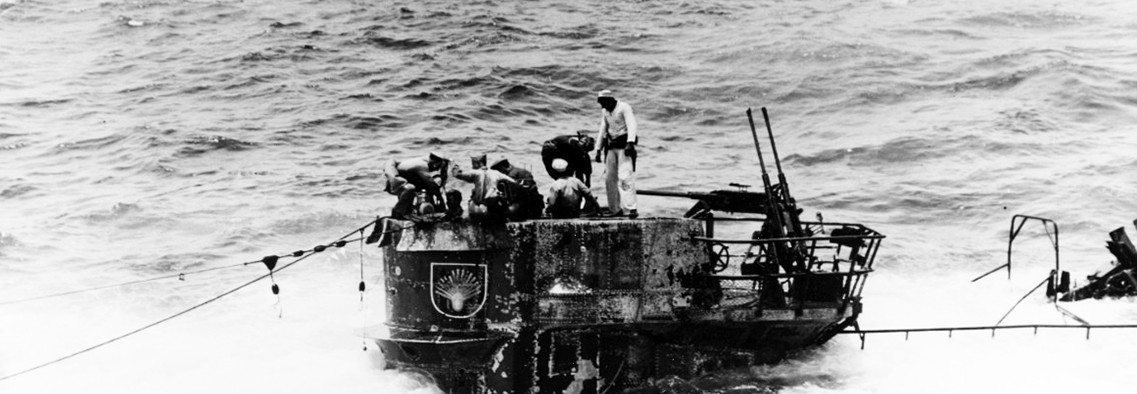
Capture of German Submarine U-505
1944 June 4: Capture of German U-boat: U-505
Task Group 22.3, commanded by Captain Daniel V. Gallery, USN, captured German (Type IXC) U-boat, U-505, on June 4, 1944. The Task Group consisted of USS Guadalcanal (CVE-60), USS Pillsbury (DE-133), USS Pope (DE-134), USS Flaherty (DE-135), USS Chatelain (DE-149), and USS Jenks (DE-665). The capture took place about 150 miles west of the coast of Rio De Oro, Africa.
Lieutenant Junior Grade Albert L. David, USN, posthumously received the Medal of Honor for his actions boarding the U-boat. U-505 had been patrolling the Gold Coast and was now homeward bound when she was caught. Under fire by depth charges from Chatelain and two Grumann F4F "Wildcat" aircraft, the submarine surfaced and immediately came under attack prompting the submarine to surrender. This capture marked the first time a U.S. Navy vessel captured an enemy vessel since the War of 1812.
Upon Germany's surrender on May 7, 1945, the U.S. Navy no longer needed to keep U-505 a secret. The U-boat went on tour as part of the Seventh War Loan Drive to raise funds for the war against Japan. U-505 stopped at several East Coast cities, where spectators could climb onboard in exchange for purchasing war bonds.
In September 1954, U-505 was dedicated as a war memorial and became a permanent exhibit at the Museum of Science and Industry, Chicago, Illinois. In 1989, the U-boat was also designated as a National Historic Landmark. U-505 is the only Type IX-C U-boat in existence today.
Image: 80-G-49167: U-505 (German Type IX-C U-boat). Members of a boarding party from USS Guadalcanal (CVE-60) go below with a bilge pump to prevent the submarine from sinking, June 4, 1944. Guadalcanal was under the command of Captain Daniel V. Gallery, USN. Official U.S. Navy Photograph, now in the collections of the National Archives.



